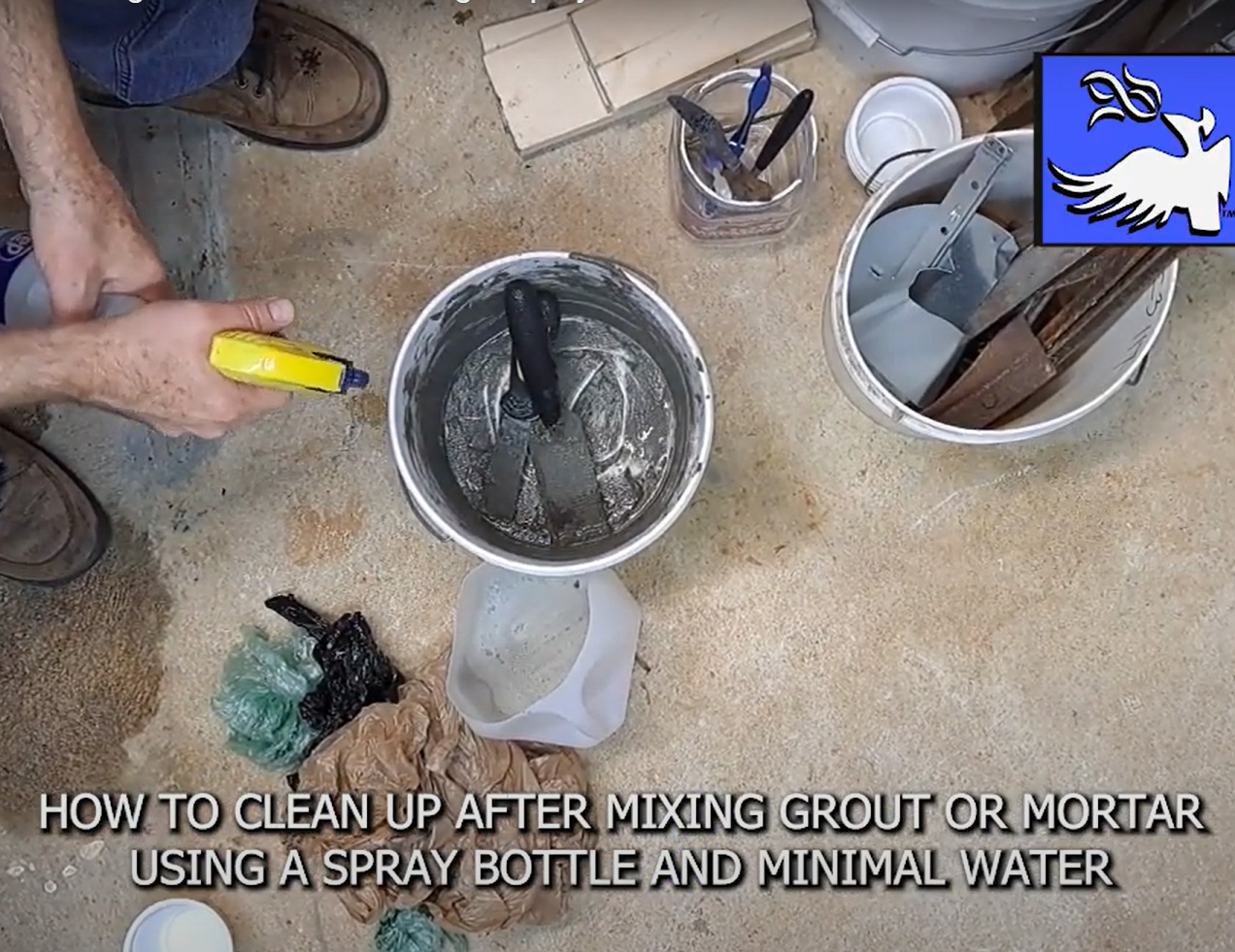I made a video showing how to clean up the spreading tools and bucket after mixing up grout or thinset mortar.
My method only requires a cup or two of water from a spray bottle and some downcycled plastic grocery bags.
Grout and thinset can be messy, and most people use a hose with a nozzle and gallons of water to clean up.
Cleaning up with a water hose isn’t practical in all locations, and our method with a spray bottle and a cup of water and some scrap material is kind of elegant in terms of minimizing the amount of water needed.
If you learn how to do this method with a cup of water, you can look like a Fremen of Arrakis and a master of practical studio skills all at once.
I didn’t invent the essence of this method. I watched an old man clean a mortar bucket in a little desert town when I was wandering around Mexico back in graduate school.
The only difference was that the old man used some sand instead of plastic grocery bags, and he emptied the bucket in the desert.
In place of plastic grocery bags, you can use many scrap materials you might have saved for recycling:
- junk mail
- cereal boxes
- cardboard
- bread bags
- produce bags
- newspapers/magazines
- old shop rags
- mildewed clothing
- anything to be discarded
The Video
Here is the video showing how to clean up messy grout and mortar with a spray bottle and a small amount of water:
The Captions
Here are the captions of the video:
After spraying about a tablespoon of water into mixing bucket, clean the spreading tools by wiping with plastic grocery bags or some other downcycled material.
I drop the same grocery bag into the bucket and use the margin trowel to stir the bag around as I scrape the insides of the bucket.
The goal is for the sticky mortar or grout to be stuck to the plastic bag instead of the insides of the bucket, so I dump it when I see that it has some big clumps stuck to it.
I add some new plastic bags, and I notice a blob of mortar on the rim of the bucket. I use yet another plastic bag to clean the rim.
I use this same bag to wipe clumps on the inside of the bucket.
I should be wearing rubber gloves because grout and mortar are mildly caustic and burn skin.
I resume stirring the plastic bags with my margin trowel.
When you find a way to use a waste material like plastic grocery bags, you can use as many as needed.
I dump the bags whenever I notice that part of the bag has a larger clump of grout or mortar trapped in it.
I periodically clean spreading tools as I use them to prevent my hands from getting contaminated. I also wipe spreading tools as needed during the clean up process for the same reason.
Notice that I haven’t had to use my spray bottle to add more water.
If this mortar were slightly older and starting to get hard, I would be adding a few squirts of water from time to time.
I would have to scrap a lot less if I sprayed some water now, but the purpose of this demo is to show how little water is required.
It’s possible to clean a 2-gallon mixing bucket such as this with as little as 1 cup (8 oz) of water.
Using as little water as possible makes it easier to dispose of the material as solid waste in the trash.
This method of cleaning a mixing bucket can usually be completed with fewer than ten bags, especially if you mix mortar or grout frequently and get some practice.
I am cleaning my hands because a little bit of mortar and water got on them. Wear rubber gloves and avoid this problem.
Now I spray water more liberally than before because there aren’t any more chunks of mortar in the bucket.
Now the process is about cleaning the residue.
The focus of the process before this point was getting rid of chunks.
Extra water wouldn’t have helped with chucks, but in this later stage of the process, spraying with water is very effective at washing out sand and residue.
Even though I am spraying as fast as a I can, the total water used is trivial, especially compared to using a water hose.
A gallon milk jug with the top cut off is my disposable waste container.
At least half of my art supplies are repurposed materials.
I will let the milk jug dry out for a few days before disposing it as solid waste in the trash.
Cleaning mixing and spreading tools is an iterative process.
Each iteration has a higher standard of clean than the one before.
Don’t stop cleaning too early.
Grout and mortar are corrosive.
Get all the residue rinsed off.


Leave a Reply